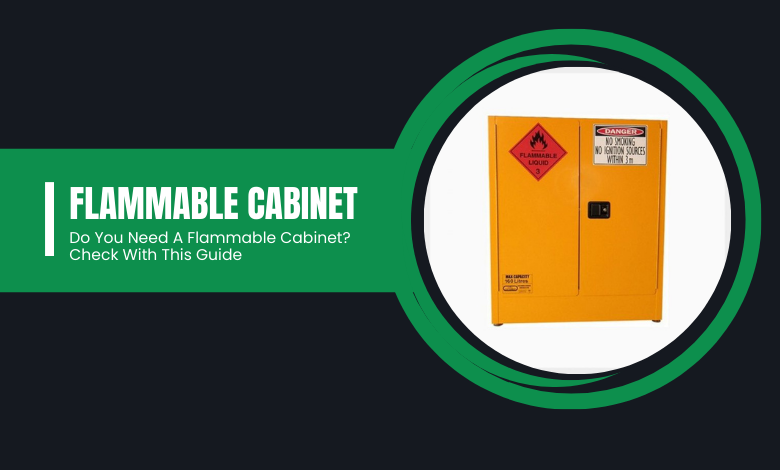Do You Need A Flammable Cabinet? Check With This Guide

Anyone in charge of workplace safety is aware of flammable substances. These are substances that need to be stored with care and encompass dangerous liquids, gases and solids.
Because of the risks involved, the government has put in place minimum guidelines for storing flammable substances. This forces companies that use hazardous substances to take all possible measures to protect their workers and workspaces. A highly recommended safety measure is a flammable cabinet. Flammable storage cabinets are made from fireproof materials, reducing the risk significantly. If you want a flammable cabinet, Spill Station is the answer.
This is a list of different types of flammable substances that must be stored in a flammable cabinet at all times, to avoid any danger to personnel or the environment.
Flammable Gases:
Flammable gas that ignites when mixed with an oxidising agent, such as air, and when supplied with an ignition source. These can be hazardous, even when stored in an airtight container, as small amounts of the gas released can form a flammable mixture under favourable conditions. This may cause fire or explosion. Some common examples of flammable gases include substances such as methane, natural gas, propane, carbon monoxide and the like.
Flammable & Combustible Liquids:
Flammable and Flammable Liquids will automatically ignite when they reach a certain temperature. While both require safe handling, the difference between flammable and combustible liquids is the flash point (the flash point is the lowest temperature at which a material gives off enough vapour to start a fire). To avoid these liquids from posing a hazard to your workplace, you should check the flash point of each liquid entering your work area and be sure to store them in an appropriate flammable storage cabinet. In terms of combustible and flammable liquids, you want to be aware of paint thinner, paint, alcohol and gasoline.
Explosive Chemicals:
Certain chemicals have explosive properties that can be activated by heat, friction or shock. Sensitive chemicals are especially dangerous, as they can be activated just by touching the container. These chemicals may occur naturally or be specially manufactured for this property. The hazards associated with these can also increase as chemicals degrade over time and therefore special care should be taken when storing old chemical stock. Hazardous compounds include those containing acetylide and the like.
Also Read:
The Brief Guide That Makes Transporting Hazardous Chemicals Simple
Oxidising Chemicals:
Chemicals can release oxygen spontaneously at room temperature or on mild heating. This release of oxygen can speed up the fire, increasing the potential for damage to your property. To reduce the risk of an accident, oxidising chemicals should be stored in a flammable safety storage cabinet. Since some oxidising agents can mix with other chemicals to cause fires, they should be stored in separate areas. Oxidising chemicals include substances such as bleach, concentrated nitric acid and hydrogen peroxide.
Solids:
Some solids are also hazardous. For example, old film and photographic negatives are often made from cellulose nitrate. This not only ignites easily but can also spontaneously ignite due to film degradation. These are particularly dangerous because they are difficult to extinguish. Another flammable solid is the picrate salt, which is commonly used to make explosives but is also used in dye production and laboratories. This material is very sensitive and reactive to heat, shock and friction.
Choose Spill Station
Spill Station’s flammable liquid cabinets are built to prime Australian standards and are suitable for storing all flammable liquids. Developed to be used in industrial environments, their storage cabinets come in sizes from 30 litres to 50 litres, whatever you need.
In the industry for over 30 years, Spill Station (https://www.spillstation.com.au/products/) is the leader in Australian workplace safety.






